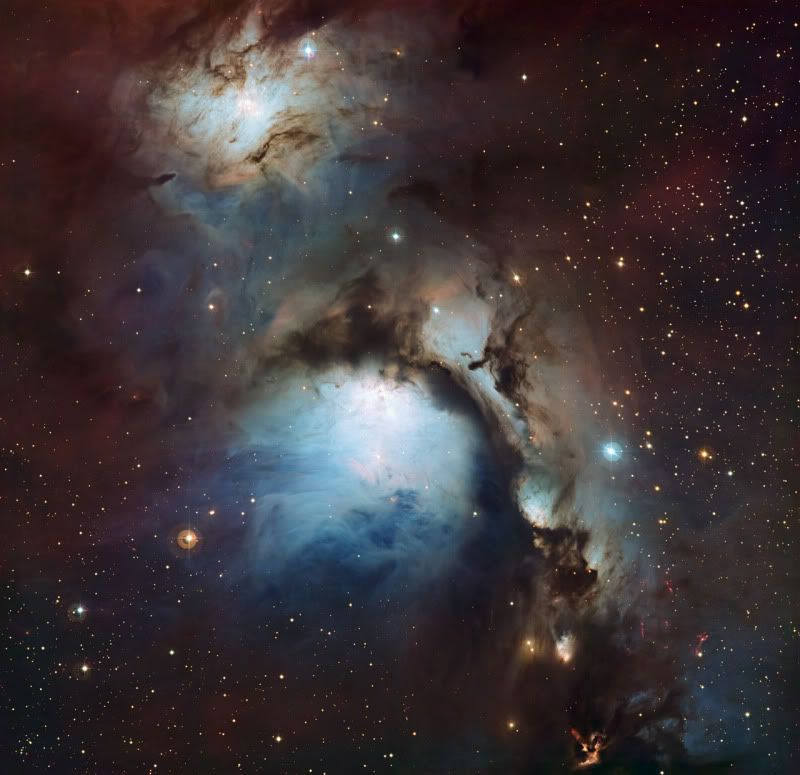Most images acquired for astronomical research never get processed in a way that turns them into something beautiful, like this one has. The researcher processes them to maximize what can be learned. Turning them into an image that is fit for public consumption takes extra work. That is why it is pretty cool that the European Southern Observatory (ESO) held a contest last year to let anyone process some of their data into pretty astronomical pictures.
Igor Chekalin won the contest with his image of the nebula M78. His winning entry inspired ESO to do their best on the same data. The result is the photo above. The full scoop on the image is here, but note that (like the blues in the image on the masthead for Visible Suns) the blue colors are signs of a reflection nebula. Unlike a nebula such as the Lagoon (M8) or the great nebula in Orion (M42), this nebula is not shining from its own emitted light. In those cases a nearby hot star (or stars) causes the gas to fluoresce. In M78 starlight is not powerful enough to make it glow. Instead it is reflected and scattered by the dust grains in the nebula. Like the other nebulae, the area in and around M78 is home to young and newly forming stars.
You can get the image here in full resolution, a 188 MB tiff file or take the video flyover below:
Loading player...

No comments:
Post a Comment